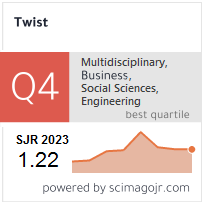Analysis and Prognosis of Cardiovascular Disease by Inflammatory Markers (Neutrophil Lymphocyte and Platelet Lymphocyte Ratio)
Keywords:
Cardiovascular Disease, Platelet Lymphocyte Ratio, Neutrophil-Lymphocyte RatioAbstract
Cardiovascular disease (CVD) defined as class of diseases that involve the heart or blood vessels. CVD is a term for several linked pathologies, commonly defined as coronary heart disease (CHD), cerebrovascular disease, peripheral arterial disease, rheumatic and congenital heart diseases and venous thromboembolism. Cardiovascular diseases are most popular common chronic disease. The total white blood cell count (WBC) and its subtypes, neutrophil to lymphocyte (N/L) ratio, can be used as an indicator of systemic inflammation. The N/L ratio has been demonstrated to have the greatest predictive power of death, cardiac disease and other complications. Elevated N/L ratio is an independent predictor of long- term inflammation can be measured by using a variety of biochemical and hematological markers. Although many specific biomarkers have been identified, most of which are time consuming and expensive. Recent evidence indicated that the ratio of sub types of blood cells have a significant prognostic value for cardiovascular disease. This study is aimed to evaluate Neutrophil-Lymphocyte ratio and platelet lymphocyte ratio among Sudanese cardiovascular disease patients. This study included 100 CVD patients and 100 controls without CVD. The NLR and the PLR were calculated as the ratio of neutrophil count to lymphocyte count and as the ratio of platelet count to lymphocyte count, respectively. ANOVA test was used in bivariate analysis to assess the factors affecting NLR and PLR. NLR was significantly higher in CVD patients when compared to controls (5.6±3.3 vs. 1.7±0.8; P= 0.000). Also CVD patients showed significantly higher value of PLR when compared to control group (162.3±83.2 vs. 98.4±28.1; P= 0.000). Moreover, both parameters (NLR & PLR) were significantly high in males CVD patients and non- STEMI CVD subtype (P < 0.05).In this study, NLR and PLR, simple inflammatory marker, can be used as an auxiliary parameter for predicting the diagnosis of CVD. And also, they can provide an additional level of risk stratification in patients with CVD.
Downloads
Downloads
Published
Issue
Section
License
Copyright (c) 2021 TWIST

This work is licensed under a Creative Commons Attribution-NonCommercial-ShareAlike 4.0 International License.











